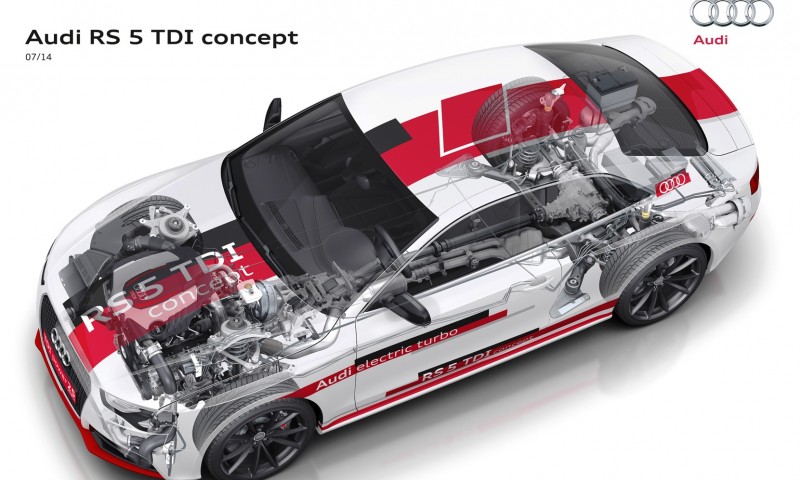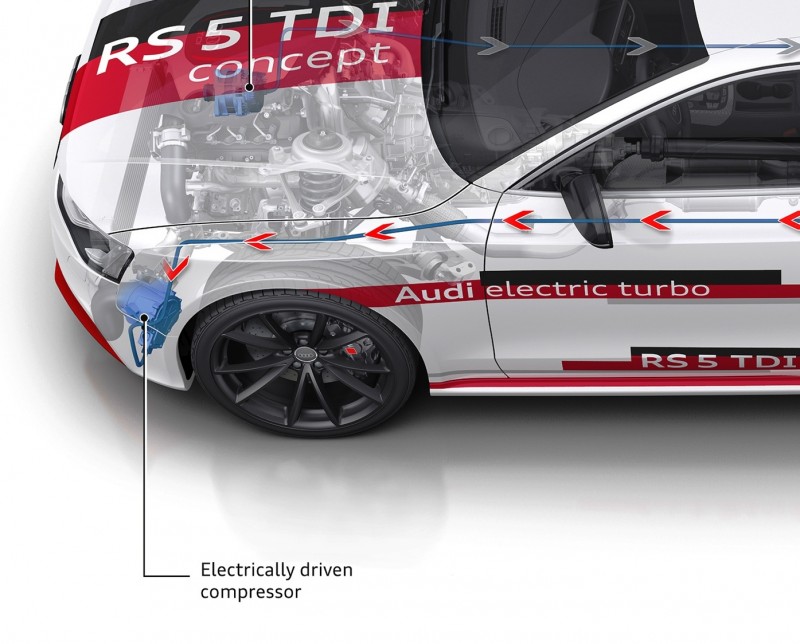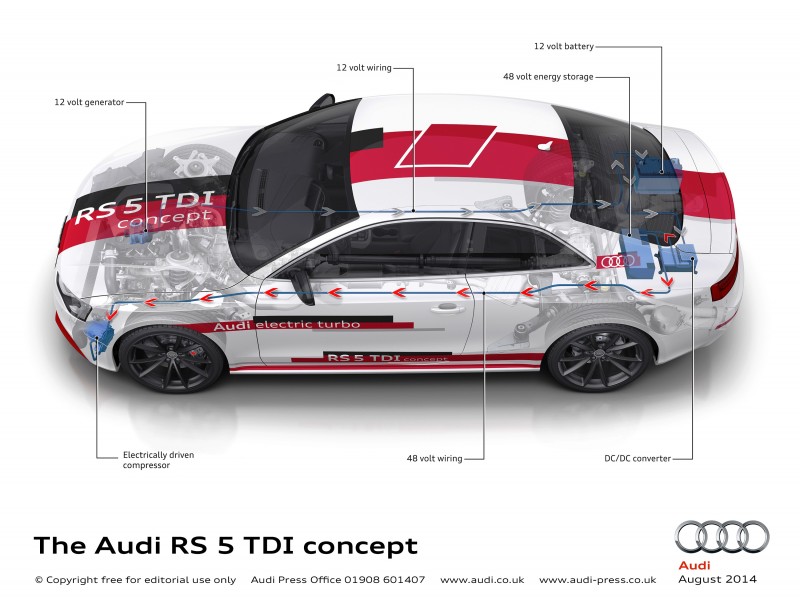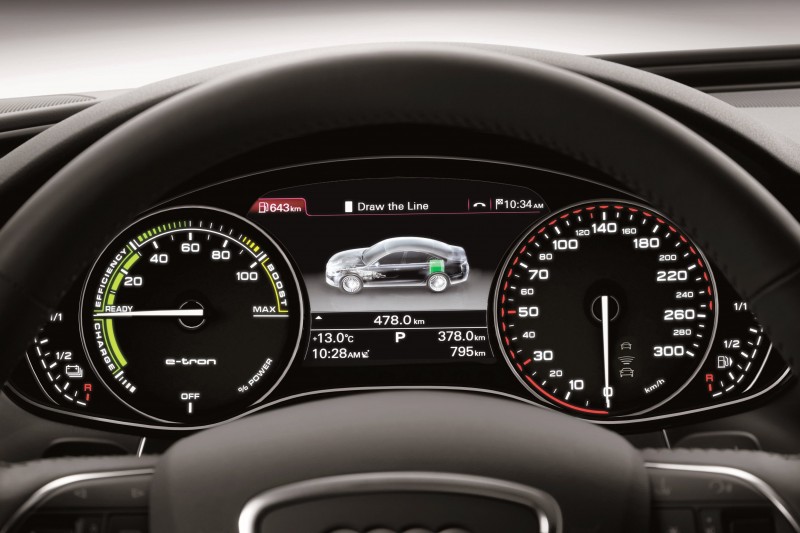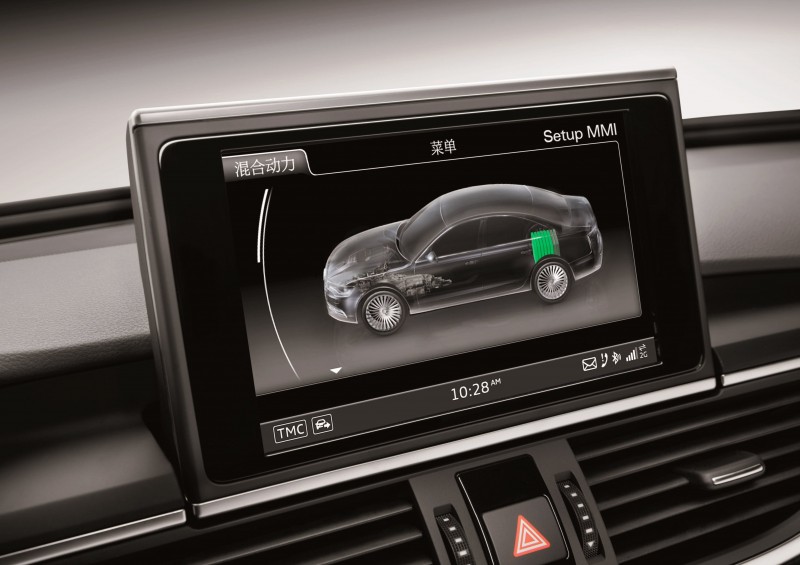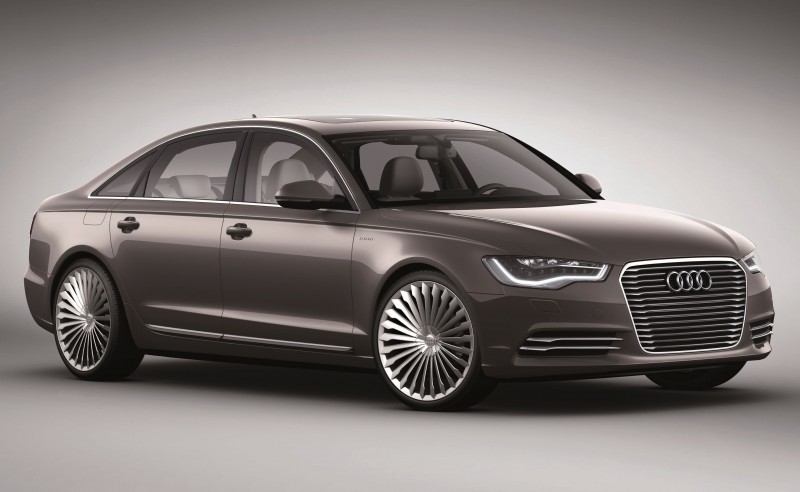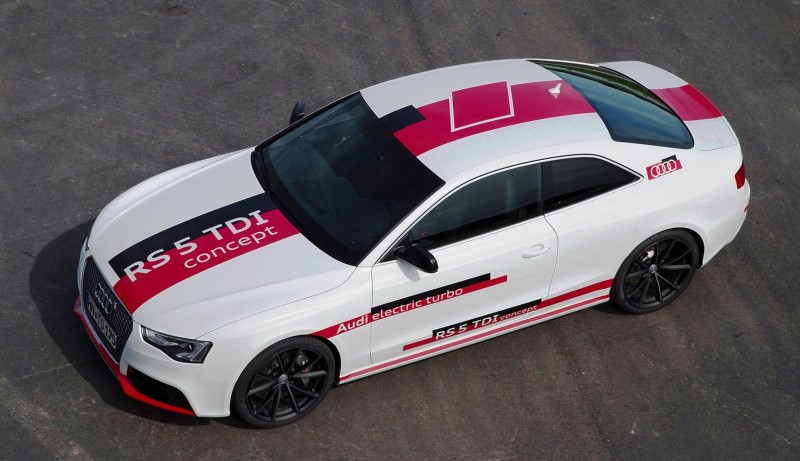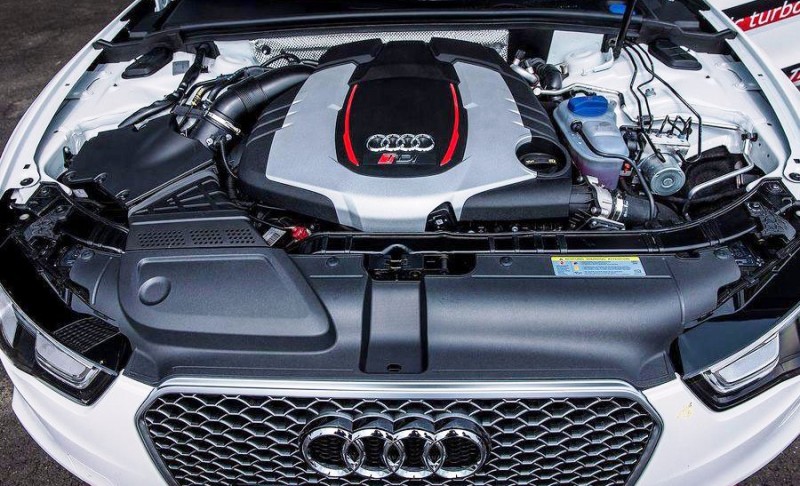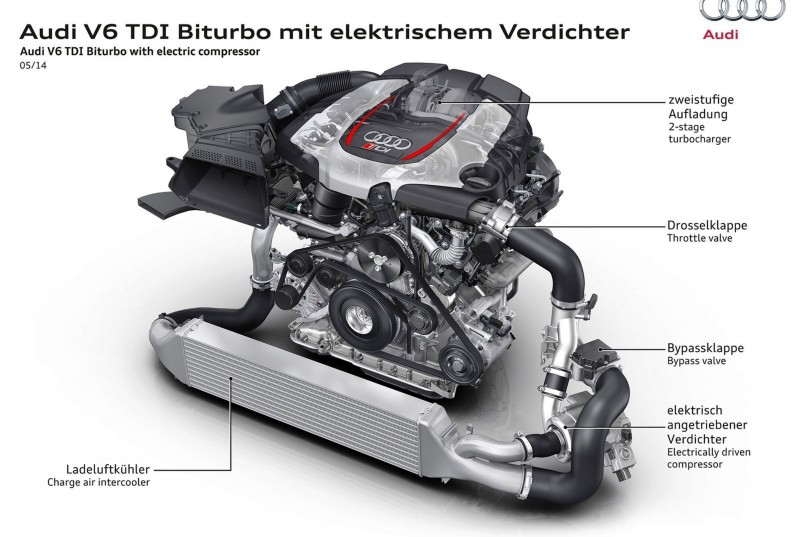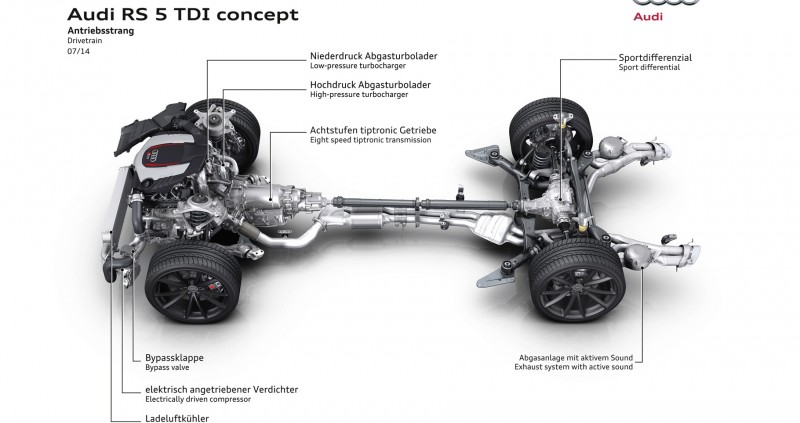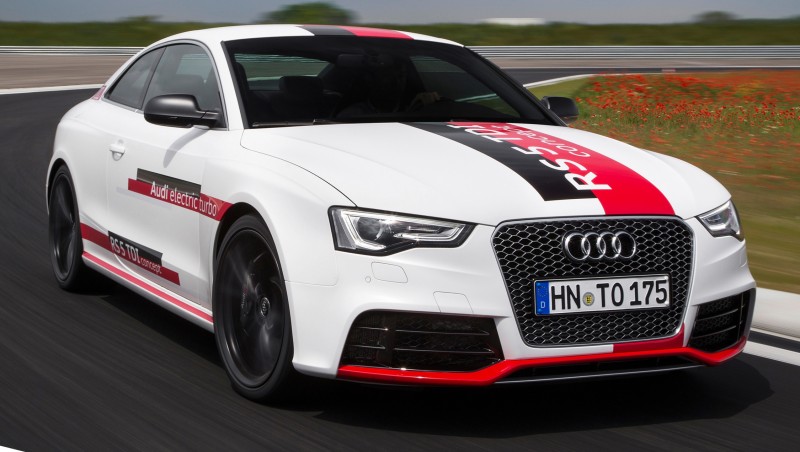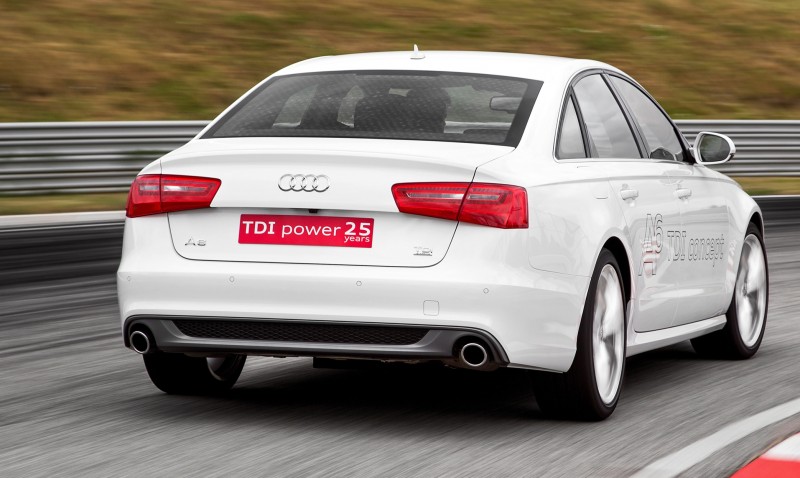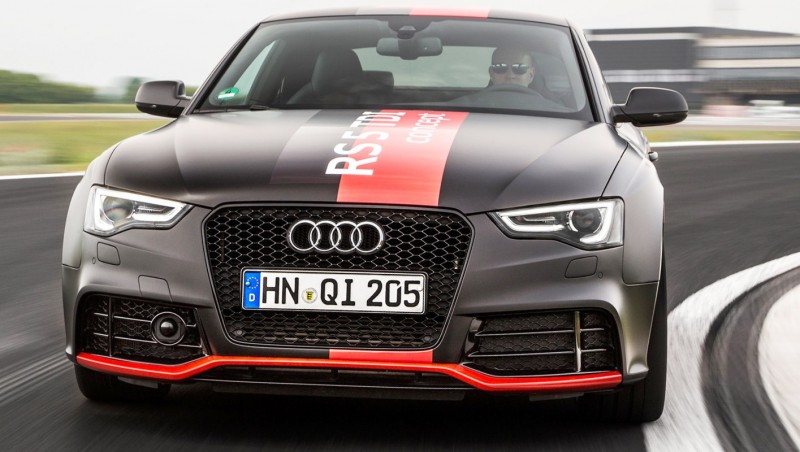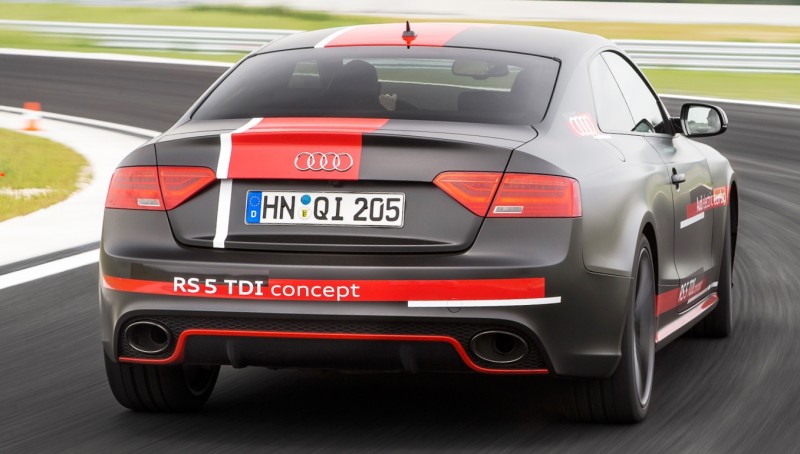The 12-volt automotive electrical architecture has long been a weak link in the further electrification of the automobile. Audi is taking big steps to quadruple the system voltage, which might be a dull topic.
Step in, the new RS5 TDI and A6 TDI concepts. Running diesel engines with this more-powerful 48-volt system allows a new type of forced induction: the electric turbocharger. Similar to a super-powerful electric leaf-blower, the possibilities are pretty interesting. No exhaust gasses are needed for this electric turbo, which can also offer anti-lag traits by zinging up to max boost before the throttle is floored — eliminating any delay in the extra power.
Audi is making the 48-volt system that supplements the existing 12-volt setup — which does seem like double the trouble.
For cars like the A6L e-Tron and these TDI concepts, however, more electric power simply translates into more road and track power. 


Audi RS5 TDI Concept
MORE VOLTS TO CREATE MORE SCOPE IN FUTURE AUDI MODELS
09/09/14
Upgrade to 48-volt electrical system will enable forthcoming models to exhibit even more Vorsprung durch Technik
-
Important building block in electrification strategy
-
More voltage and more power for new technologies
-
Scalable platform concept suitable for wide-ranging uses
In anticipation of a raft of new technological innovations which will pave the way for even more compelling production cars, Audi is to upgrade part of its vehicle electrical system from twelve to 48 volts. The move represents another technical building block for facilitating the integration of advanced new systems without jeopardising corresponding increases in engine performance and efficiency.
“We are using the full bandwidth of electrification in our drive principles strategy. Running part of the vehicle electrical system at 48 volts plays a central role in this,” commented Prof. Dr. Ulrich Hackenberg, Member of the Board of Management for Technical Development at Audi. “It enables us to make more energy available. That paves the way for new technologies with which we can make our cars more sporty, more efficient and more convenient to use.”
Audi recently showcased the scope of the 48‑volt electrical system in the Audi A6 TDI concept and RS 5 TDI concept technology demonstrators. Both models are fitted with an electrically powered compressor. This operates independently of the engine load and therefore fundamentally improves the accelerative performance. 48‑volt technology is also ideal for realising convenience systems for dynamic chassis control. Audi will shortly be unveiling a variety of applications in this field.
The current state of the art technology has taken 12‑volt electrical systems to their very limits. Especially at low temperatures, all the various static‑load consumers can account for the entire power generated by the alternator, which can deliver up to three kilowatts. The battery power is no longer capable of meeting the demands of new, dynamic‑load consumers such as high‑performance electric compressors.
The solution is a second subsidiary electrical system running at 48 volts, to complement the 12‑volt power supply. The higher voltage means smaller cable cross-sections are needed; this translates into lighter cable harnesses with lower power dissipation. The 48‑volt electrical system features new storage technologies and delivers much more power than the 12‑volt system with lead batteries. That makes it an important element of the Audi strategy of electrifying various stages of the drivetrain. The Group’s developers have already come up with a scalable platform concept, including a version that incorporates the electrically powered compressor.
In the current highest development version, a compact lithium‑ion battery supplies 48 volts as the energy source during engine‑off phases; a DC/DC converter integrates the 12‑volt electrical system. The lithium‑ion battery operates in conjunction with a new, efficiency-optimised alternator that qualifies the drivetrain as a mild hybrid. Within this concept there are diverse ways of starting, controlling and deactivating the combustion engine as needed. The powerful alternator achieves an energy recovery output of ten kilowatts, far more than is possible at present. That adds up to a saving of up to ten grams of CO2 per kilometre, equivalent to around 0.4 litres of fuel per 100 km.
Picture caption
Audi switches on 48-volt technology – Audi is extending the scope of its electrification strategy by upgrading its 12-volt systems to 48 volts, unlocking the potential for more energy and greater efficiency for future applications.
Note to Editors
In 2013 Audi achieved best ever worldwide sales of 1,575,500 cars, an 8.3 per cent improvement over 2012. Sales in the UK increased by 14.9 per cent year-on-year to 142,020 cars, establishing another record and elevating the brand to the lead position in sales terms in the premium sector for the first time. To maintain this strong performance the brand plans to invest around €22 billion – mainly in new products and sustainable technologies – between now and 2018. Audi lives up to its corporate responsibility and has strategically established the principle of sustainability for its products and processes. The long-term goal is CO2-neutral mobility. This philosophy also applies to the brand’s sports car racing activities, in which Audi made history in 2012 by winning the Le Mans 24-hour race using pioneering hybrid diesel technology in the R18 e-tron quattro. It went on to repeat the performance in the 2013 and 2014 races, taking the total number of Audi victories there to 13. 


Tom Burkart is the founder and managing editor of Car-Revs-Daily.com, an innovative and rapidly-expanding automotive news magazine.
He holds a Journalism JBA degree from the University of Wisconsin – Madison. Tom currently resides in Charleston, South Carolina with his two amazing dogs, Drake and Tank.
Mr. Burkart is available for all questions and concerns by email Tom(at)car-revs-daily.com.



